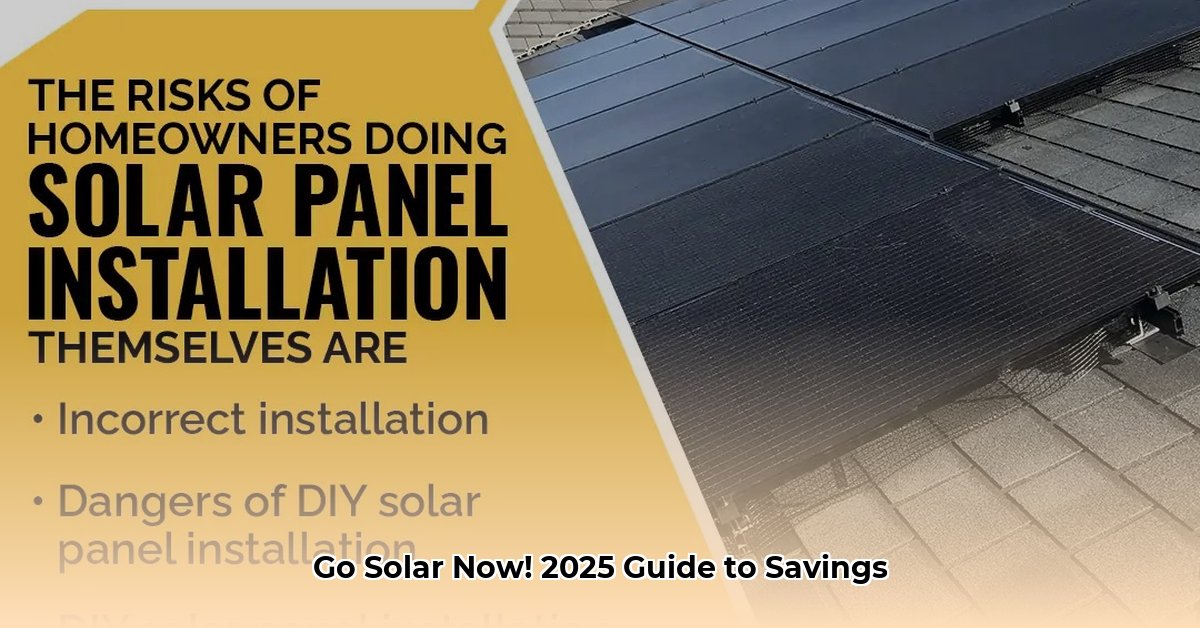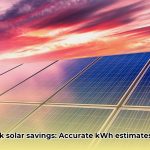Going solar can feel like a big leap, but this updated 2025 guide breaks down everything you need to know about solar panel installation, from checking your roof’s sun potential to understanding the financial benefits. Whether you’re a seasoned DIYer or prefer professional help, we’ll equip you with the knowledge to make informed decisions every step of the way.
Is Your Home Solar-Ready?
Before diving into panel specifics, let’s assess your property’s solar suitability. Just like a garden thrives in sunlight, your solar panels need ample sun exposure. A south-facing roof (in the Northern Hemisphere) is ideal, but east- and west-facing roofs can also work. However, shade from trees or buildings can significantly reduce output. Tools and apps can help analyze your roof’s solar potential, considering shade and sun hours throughout the year. Additionally, evaluate your roof’s structural integrity and available space. It needs to support the panels’ weight, and you’ll need enough area for your desired energy output. Finally, check local building codes and HOA regulations regarding solar installations to avoid potential issues.
Designing Your Solar Power System
Now for the exciting part: designing your system! This involves selecting the right components to match your energy needs and budget.
Choosing Your Panels
- Monocrystalline: The most efficient but priciest option, ideal for maximizing energy production in limited space.
- Polycrystalline: A good balance of efficiency and affordability, suitable for most residential installations.
- Thin-Film: Less efficient but lightweight and flexible, potentially useful for non-traditional installations or RVs. Ongoing research suggests that thin-film technology may become more competitive in the future.
Inverters: The Brains of the Operation
- String Inverters: The most common and cost-effective choice, suitable for roofs with consistent sun exposure.
- Microinverters: Optimize individual panel output, ideal for roofs with partial shading. While more expensive, they can maximize energy production in less-than-ideal conditions.
- Power Optimizers: Similar to microinverters, they optimize panel performance but work with a central string inverter, potentially offering a cost-effective balance between performance and affordability.
Battery Storage: Power on Demand
Adding a battery allows you to store excess energy generated during the day for use at night or during outages. While batteries add to the initial cost, they increase energy independence and provide backup power. The cost of battery storage is likely to decrease as technology advances, making it an increasingly attractive option.
DIY or Professional Installation?
This crucial decision hinges on several factors.
Cost
DIY is cheaper upfront, potentially saving $7-$9 per watt installed. However, hidden costs (equipment rentals, unforeseen issues) can arise. Professional installation is pricier initially but often includes all components and labor, simplifying budgeting.
Expertise and Safety
Solar installation requires electrical and roofing experience. Incorrect wiring poses serious safety risks. Professionals have the training and insurance to ensure safe, compliant installations.
Time Commitment
DIY is time-intensive, from planning to inspections. Professionals, with their experience and dedicated teams, can often complete installations faster.
Warranties
Improper DIY installation may void equipment warranties. Professionals often provide additional workmanship warranties, adding peace of mind.
| Feature | DIY | Professional |
|---|---|---|
| Cost | Lower upfront, potential hidden costs | Higher upfront, typically all-inclusive |
| Time | Significant time investment | Faster completion |
| Expertise | Requires technical skills | Expertise provided |
| Warranty | May void warranties | Comprehensive warranties |
| Safety | Higher risk | Lower risk |
Calculating Solar Savings and ROI
Understanding potential savings and return on investment (ROI) is essential.
-
Total System Cost: Include panels, installation, permits, and inspections.
-
Incentives: Deduct tax credits, rebates, and other programs from the total cost.
-
Annual Energy Savings: Estimate yearly savings based on system size, energy usage, sunlight, and electricity rates. Online calculators can help, but remember that these are estimates.
-
Payback Period: Divide the net system cost (after incentives) by the estimated annual savings to determine how long it takes to recoup your investment.
-
Lifetime Savings: Project annual savings over the system’s lifespan (25-30 years) and subtract the net system cost.
-
ROI: Divide lifetime savings by the net system cost and multiply by 100 to express your return as a percentage.
Factors influencing ROI include system size, energy consumption, sunlight availability, local electricity rates, incentives, and financing options. While helpful, online ROI calculators are just estimates. Future electricity rates, maintenance costs, and panel degradation can impact actual savings.
Step-by-Step Installation (For Experienced DIYers Only!)
This guide provides a general overview. Consult qualified professionals before attempting any electrical work.
-
Planning: Determine system size based on energy needs and assess roof suitability (sun exposure, structural integrity).
-
System Design: Select panels, inverter, wiring, mounting hardware, and optional battery storage. Ensure component compatibility.
-
Material Acquisition: Purchase a complete DIY kit or source individual components.
-
Installation: (Consult a qualified electrician if you are not experienced with electrical work.)
- Mount Panels: Securely attach mounting hardware and panels to the roof.
- Position Components: Place inverters, batteries, and other components near the panels.
- Wiring: Connect all components according to manufacturer guidelines, ensuring proper grounding and safety measures.
-
Post-Installation: Periodically check the system’s performance. Consult professionals for any issues or concerns.
Disclaimer: This information is for educational purposes only. Consult qualified professionals and local authorities before undertaking any electrical work or solar panel installation. Regulations vary, and safety should always be your top priority. Solar technology is constantly evolving. Staying up-to-date with advancements can help you maximize the benefits of your solar investment.
- How To Make Electricity At Home With Water Using DIY Micro-Hydro - December 7, 2025
- How to Generate Electricity from Water at Home for Off-Grid Power - December 6, 2025
- Small Scale Hydropower Brings Sustainable Energy to Rural Areas - December 5, 2025
















